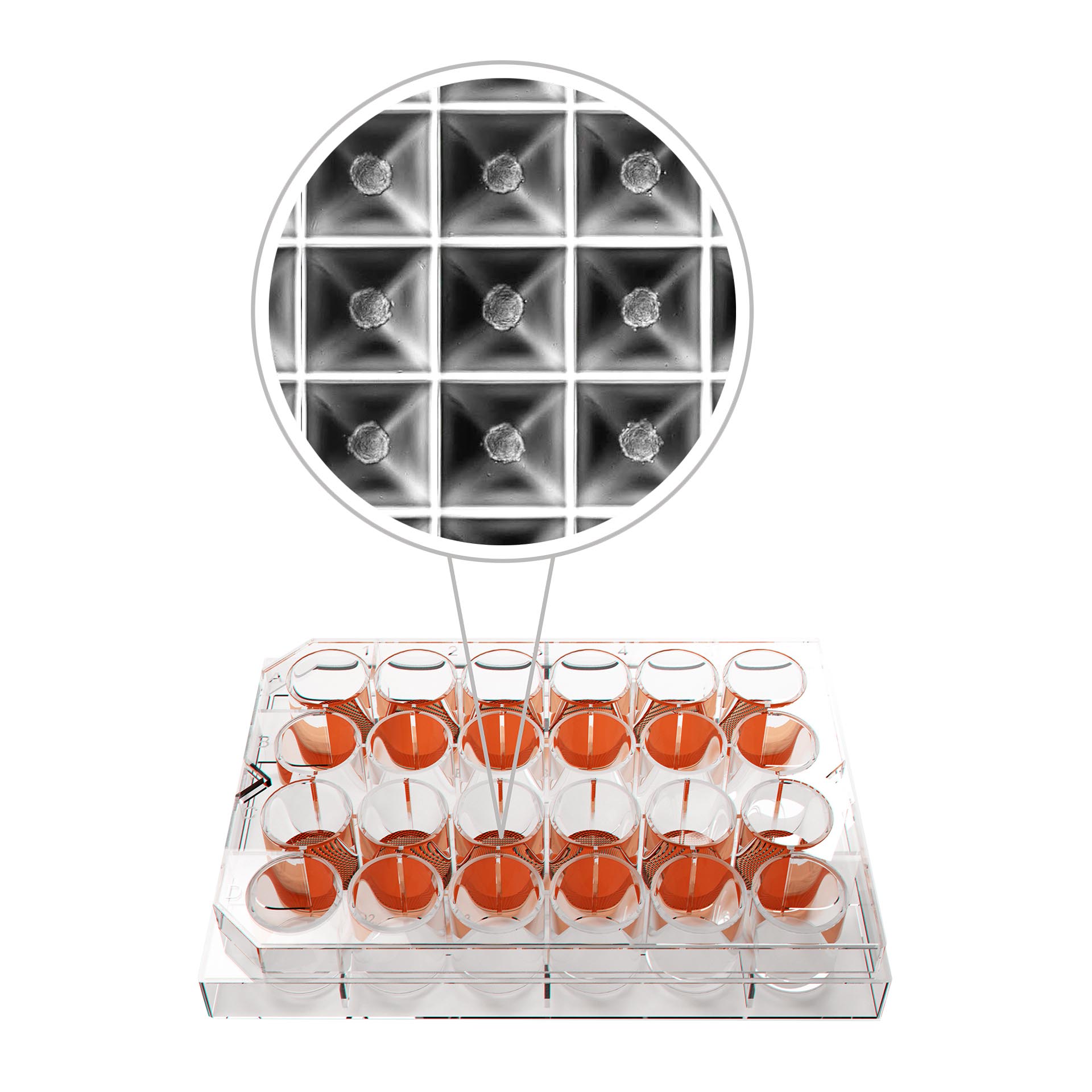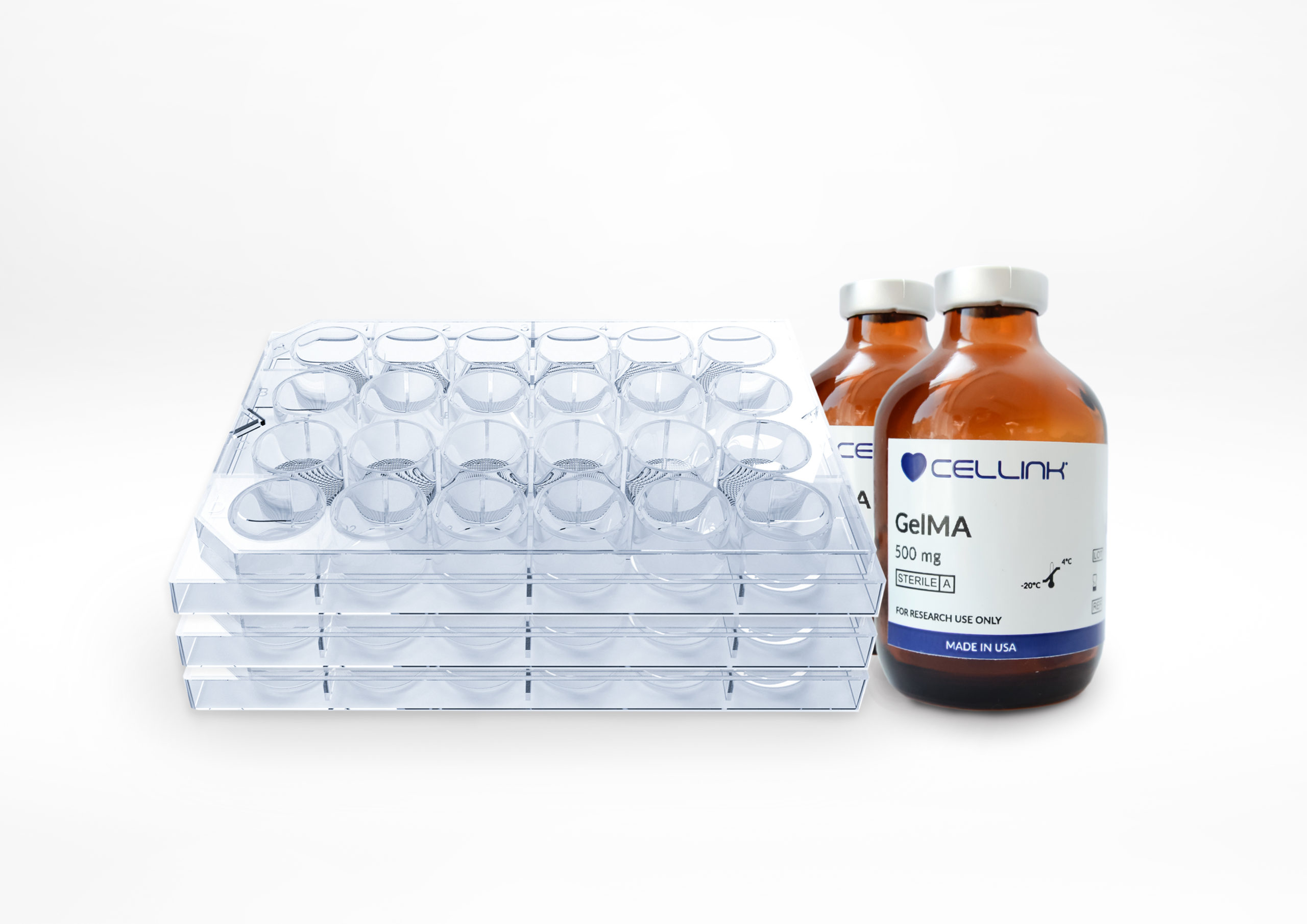Cellink partnered with Swiss medical technology manufacturer Kugelmeiers to offer a solution for more convenient and effective 3D cell culturing. The newly available Cellink Spheroid Kits combine Kugelmeiers’ Sphericalplate 5D (SP5D) patented platform technology for creating highly standardized cell spheroids with Cellink’s vast portfolio of bioinks. Through this new distribution partnership announced in July 2020, the kits will be available worldwide (except in Japan and Switzerland), through Cellink’s existing marketing and distribution network.
For over a century, 2D cell cultures have been used as in vitro models to study biochemistry and physiology of cells, and test cellular drug responses to drug candidates. Although these systems are attractive because they are simple, cheap, and work for a variety of cell types, they have some serious limitations and have proven to have high failure rates, especially for new drug discovery and clinical trials. This is mainly because traditional 2D cultures cannot imitate the in vivo microenvironments of cells. Instead, the more predictive 3D cell cultures can help scientists bridge the gap between in vitro and in vivo models.
The decades’ old 2D cell cultures will continue to be relevant, but a transition is imminent. In spite of high costs and little infrastructure to support 3D cell culture research, the market is expected to grow at over 15% annually, driven mainly by a growing interest in alternatives to animal testing, personalized medicine, and accurate in-cellular environment investigation. Cellink, a Boston headquartered leading biotechnology startup, claims to have recognized a paradigm shift toward 3D cellular models in medical research, and within the realm of 3D cell culture, they noticed spheroids have gained traction as an effective approach for modeling tissue.
Culturing cell spheroids is an important emerging field for cell biologists that can be used in scientific, diagnostic and therapeutic applications. Cellink further stated that when coupled with 3D bioprinting, the enhanced biological functionality and accuracy of spheroids can be used like “building blocks” for tissue engineering.

Sphericalplate 5D, standardized, uniform, size-controlled spheroids in large scale (Image courtesy of Kugelmeiers)
“We are happy to partner with Kugelmeiers on this distribution agreement for the cutting-edge Sphericalplate 5D, which complements our existing portfolio of 3D cell culturing technologies and expanding library of high-quality bioinks. Cellink strongly believes 3D cell culturing is the future of medicine and is committed to researching, developing and distributing to the scientific community the tools vital to making that change a reality,” said Magnus Lindeberg, Bioprinting Product Manager at Cellink.
Designed specifically for fast and easy spheroid formation combined with the benefits of physiologically relevant matrix embedding, Cellink indicated that its Spheroid Kits strengthen researchers’ work. By pairing spheroids with bioinks and bioprinting, they offer the potential for an effective workflow to generate 3D models, giving researchers full control over the placement of spheroids. Scientists at Cellink determined that encapsulating spheroids into one cartridge using Cellink’s GelMA or Coll 1 bioinks could provide unique opportunities for discoveries in bioprinting and 3D cell culture, such as for immuno-oncology applications.

The GelMA Spheroid Kit includes 3 units of the Sphericalplate 5D, sterile GelMA powder and a choice of photoinitiators for blending customized bioinks (Image courtesy of Cellink)
Kugelmeiers Director of Sales, Manfred Vogel suggested: “In Kugelmeiers vision to enable unlimited cell therapies, it is a great honour for us to partner with Cellink – the leading provider for 3D bioprinting technologies. We strongly believe that the combination of the high quality bioinks from Cellink and our 3D cell culture technology Sphericalplate 5D will help to find functional and empowering solutions for the global scientific, diagnostic and medical community.”
Aiming to solve the poor reproducibility of regenerative research and 3D cell culture, Kugelmeiers, a University of Zurich spin-off 3D cell culture company, developed SP5D to help make standardized 3D stem cell culture possible, reducing time, waste, and costs by at least 60 times, according to the company. The platform consists of a 24-well plate that contains 750 microtiter basins per well with rounded bottoms, using a special, patented geometry that promotes spheroid formation and prevents the deposition of cells in other areas.
Founder and medical director of the company, Patrick Kugelmeier, said during the release of his company’s key product in 2018, that the whole field of stem cell research is slowed down because of the lack of standardization of 3D culture protocols, and claimed that SP5D was created to enable standardized 3D stem cell culture and solve fundamental problems in regenerative medicine. Mainly due to the fusion of biology with geometry, every cell finds its position from the physiological environment of rounded bottoms. Although SP5D is for research use only, the company revealed plans to begin the first human trial in 2020, together with four leading European transplant centers.
This news comes as no surprise, especially because Cellink has announced strategic partnerships for years, allowing it to reach new markets, access innovative products, and more customers. The company has been working towards maximizing the impact of life-science research by developing technologies that disrupt entire industries. By partnering with Kugelmeiers, they are propagating 3D cell culture practices to improve in vivo and ex vivo tissue models, to recreate cell environments and to widen the scope of bioprinting applications. Helping scientists automate workflows and scale models through 3D cell culture may improve the efficacy of regenerative and translational medicine in the future, leading to more promising solutions to some of the biggest issues facing healthcare today.
Subscribe to Our Email Newsletter
Stay up-to-date on all the latest news from the 3D printing industry and receive information and offers from third party vendors.
You May Also Like
Gorilla Sports GE’s First 3D Printed Titanium Cast
How do you help a gorilla with a broken arm? Sounds like the start of a bad joke a zookeeper might tell, but it’s an actual dilemma recently faced by...
Nylon 3D Printed Parts Made More Functional with Coatings & Colors
Parts 3D printed from polyamide (PA, Nylon) 12 using powder bed fusion (PBF) are a mainstay in the additive manufacturing (AM) industry. While post-finishing processes have improved the porosity of...
$25M to Back Sintavia’s Largest Expansion of Metal 3D Printing Capacity Since 2019
Sintavia, the digital manufacturing company specializing in mission-critical parts for strategic sectors, announced a $25 million investment to increase its production capacity, the largest expansion to its operations since 2019....
Velo3D Initiates Public Offering in a Bid to Strengthen Financial Foundations and Drive Future Growth
Velo3D (NYSE: VLD) has been among a number of publicly traded 3D printing firms that have attempted to weather the current macroeconomic climate. After posting a challenging financial report for 2023,...
































